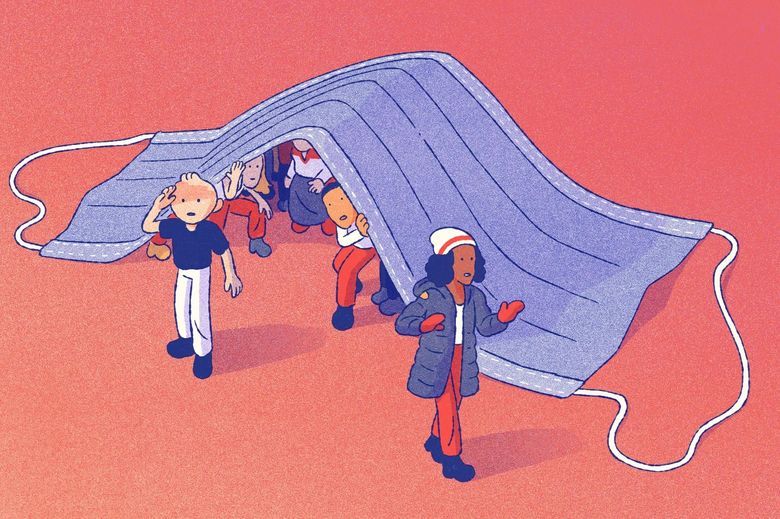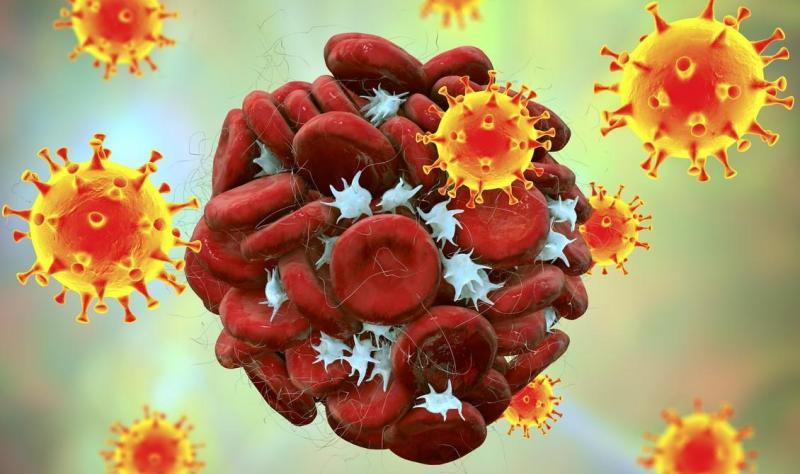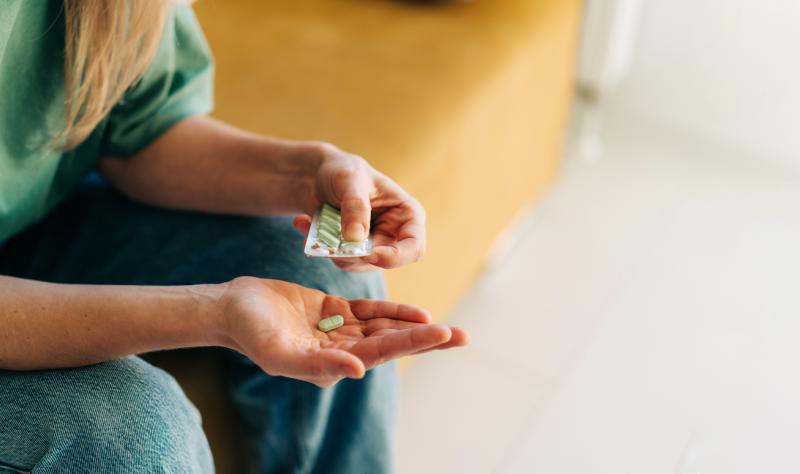Coronavirus daily news updates, May 7: What to know today about COVID-19 in the Seattle area, Washington state and the world – The Seattle Times
Julio Marchi May 7, 2022
The Biden administration is warning the country could see around 100 million COVID-19 infections and a significant increase in deaths driven by the omicron subvariants during the fall and winter.
The projection comes as the U.S. nears a COVID-19 death toll of 1 million. At the same time, the administration aims to persuade lawmakers to back billions of dollars in funding to be buy more vaccines, test and treatments in preparation for projected surges.
Meanwhile, the Olympic Council of Asia announced this year’s Asian Games in China will be postponed citing concerns over potential spread of the virus in the country.
We’re updating this page with the latest news about the COVID-19 pandemic and its effects on the Seattle area, the U.S. and the world. Click here to see the rest of our coronavirus coverage and here to see how we track the daily spread across Washington.
Navigating the pandemic


Higher prices, staffing shortages, angst. Here’s what to expect as restaurants emerge from the pandemic
For diners stopping in at Marjorie, a restaurant on Seattle’s Capitol Hill, the full tables and busy staff might give the impression that the pandemic is truly, finally over.
They can eat and drink like before times and “walk away thinking, ‘well, they made it … everything is back to normal,’” says owner Donna Moodie.
But for Moodie, everything is most assuredly not back to normal.
Her menu is smaller now, in part because two years of supply chain chaos and price inflation mean some items were too costly to serve — among them, Moodie’s signature bestseller, crabcakes.
She also has just eight employees, half the number she had before the pandemic, thanks to a labor shortage that is still wreaking havoc on restaurants across the region. That’s limiting how much business Moodie and other restaurants can do, and thus how fast they can recover.
Moodie expects things to improve somewhat as the pandemic fades. But after two years of false starts and setbacks, she no longer hopes to get back the life she had before COVID. “The future we’re looking at,” says Moodie, pausing. “It’s a different model.”
On the surface, the Seattle area’s restaurant scene is roaring back to its pre-pandemic self. Consumer spending at restaurants has nearly recovered. Many of the old hot spots are packed again on weekends. Masks, social distancing and other public health measures are in decline — for now, at least.
Yet COVID’s effects are still visible everywhere. Once-exotic labor-saving technologies, such as QR code ordering, have become everyday and routine.
But restaurants are also still grappling with many of COVID’s less positive consequences.
In others words, diners should be prepared for restaurant experiences that may be quite a bit different from what they had before.
Read the full story.
Indoor masking once again ‘strongly recommended’ in Chicago as COVID-19 numbers increase
Chicago health officials announced Friday that indoor masking is once again “strongly recommended” — but not required — in the city as the risk of contracting COVID-19 in Cook County has increased.
Chicago’s public health Commissioner Dr. Allison Arwady made the advisory after the Centers for Disease Control and Prevention deemed Cook County is now in the “medium” risk level for community transmission. The metrics are based on a combination of new cases and hospitalizations, but the medium category is automatically reached if weekly cases surpass 200 positive tests per 100,000 residents.
Arwady stressed the city is not near adding back mandates on indoor masking or proof-of-vaccination, though Chicago Public Schools and the Chicago Transit Authority are “encouraging” indoor masking.
“Chicago moving into the medium level does not mean a citywide mask mandate, restrictions on public gatherings, or reinstatement of vaccination requirements at this time,” Arwady said in a statement. “With the way the current COVID variants are behaving, those are measures we would consider if we reached the high COVID-19 community level — which we aren’t close to reaching in Chicago right now.”
In Chicago Public Schools, meanwhile, employees and parents received a letter Friday from CPS CEO Pedro Martinez who said the district will “continue strongly encouraging the use of masks in our schools,” especially among unvaccinated students, but it will not restore the mask mandate it dropped in March. Martinez said CPS will follow the recommendations of the Chicago Department of Public Health.
Read the full story.
China’s unvaccinated elderly prevent an end to covid lockdowns
SHENZHEN, China – On a sweltering afternoon in this southern Chinese city, a young woman sat at a stand of giveaways aimed at convincing some of the city’s remaining unvaccinated residents to get their shots.
“You can get a bag of rice, cooking oil, or two bottles of shampoo,” she said, offering the tempting choice to passersby.
There are few takers because almost all of the city’s working-age residents have been vaccinated, but across the country and in Shenzhen, it is the elderly who are the main holdouts. Unlike most of China’s coronavirus prevention measures, vaccination is not mandatory, and low uptake among the country’s most vulnerable groups is a major reason Communist Party leaders feel compelled to persist with a grueling “zero covid” approach.
As the costs of lockdown in China have mounted, the need to vaccinate the entire population has become paramount. Shanghai has suffered staggeringly over the past month, with residents trapped by a strict lockdown unable to reach hospitals and suffering psychological breakdowns after weeks-long home confinement with an unknown end date. Supply chains worldwide have been upended.
Despite the mounting criticism, China’s top leaders declared on Thursday that there would be no let up on the zero-covid policy, and that they would fight any attempts to question the approach. The committee, led by President Xi Jinping, said relaxation of controls now would lead to “massive numbers of infections” and deaths.
They only need to look next door to Hong Kong, where the omicron outbreak this year tore through the high numbers of unvaccinated elderly people and resulted in one of the highest fatality rates in the world.
The head epidemiologist of the national covid response team, Liang Wannian, said last week that vaccination rates among the elderly and children were not high enough, and “if we choose the so-called policy of coexisting with the virus, medical resources would be very likely be overwhelmed.”
But outside the flare-up zones, it’s easy to see why older residents might be reluctant to get vaccinated. In places like Shenzhen, city life bustles as normal, except that pedestrians have to show proof of a negative coronavirus test within the past 72 hours to enter any public spaces.
Read the full story.
How COVID is helping us move away from white-centered clinical trials to reach more patients
Rutgers researchers made a startling discovery when the pandemic curtailed routine medical visits: Going virtual to test cutting-edge therapies reached more diverse patients.
Clinical trials test the effectiveness and safety of new medications or devices. Yet the vast majority of such studies do not enroll participants that represent America. Black patients account for, on average, just 5% of clinical trial participants nationally, according to the American Association of Medical Colleges.
Rutgers’ remote experiment with COVID-19 treatments broke down logistical barriers by allowing people to self-monitor symptoms and check in through online portals. Trials typically require participants to make regular trips to medical offices for blood draws and check-ins. These visits can take hours in the middle of a workday, and be inaccessible to people who can’t take time off work, or lack transportation or child care.
The pandemic has proven why change is necessary — Moderna recast its vaccine trials after the initial participant pool was lacking in Black and Latino participants. Philadelphia research hubs now are cutting a path to more equitable clinical trials to address the deep racial disparities in the U.S. health-care system. Rutgers, the University of Pennsylvania, and Fox Chase Cancer Center are among the institutions tackling other entrenched challenges involved, including racism, distrust of medicine, and inadequate community connections.
“The landscape for clinical trials research and participation in clinical trials is dramatically different than it was pre-COVID,” said Reynold Panettieri, director of the Rutgers Institute for Translational Medicine and Science.
Research has found that social determinants of health, such as racism, stress, food insecurity and neighborhood safety, are the leading reasons why people of color experience more severe illness compared with white people. Genetics also can affect how people respond to certain cancer treatments.
Read the full story.
Can China preserve both its economy and its zero-tolerance COVID-19 policy?
China’s zero-COVID strategy is starting to derail another major item on the government’s agenda: economic stability.
In the last month, sweeping lockdowns across the country have crimped manufacturing. Stay-at-home orders have stunted consumer spending. The closures are also compounding supply chain issues that have boosted inflation and weighed on global growth.
“No part of China’s economy is untouched by the tightening of zero-COVID policies,” Craig Botham, chief China economist at Pantheon Macroeconomics, wrote in a research report to clients this week.
The costs of prioritizing the pandemic over all else are creating a dilemma for President Xi Jinping as he prepares to assume a third term later this year.
China’s initial success in stopping the spread of COVID-19 while the West floundered became validation for some of the strictest virus control policies in the world. But it’s unclear how long the country’s leaders can maintain those policies without sacrificing the economic growth that has long been the bedrock of their rule.
The 5.5% gross domestic product growth target that China set in March is looking more elusive the longer that lockdowns go on.
Compared with the early days of the pandemic, China is now facing a more contagious variant as well as dwindling public patience for harsh restrictions and growing criticism from the normally muted business community.
“The system’s focus on zero-COVID leads to many decision makers being in a kind of self-destruction mode,” Joerg Wuttke, president of the EU Chamber of Commerce in China, recently told the financial publication the Market NZZ. “They don’t care about the economy in the short term.”
Read the full story.
Middle, high schoolers in California are closer to autonomy in choice on COVID vaccine
On Thursday, California lawmakers voted unanimously, 7-0, to move a bill that would allow kids to get COVID-19 and other FDA-approved vaccines without permission from their parents or guardians, despite vocal opposition from people hesitant about safety of the vaccine and kids’ rights to choose.
In January, Sen. Scott Wiener, D-San Francisco, introduced Senate Bill 866, the Teens Choose Vaccines Act, to allow young people ages 12 to 17 to bypass their parents’ vaccine hesitancy or busy schedules, and give them more autonomy over their bodies.
“Teens should be able to protect their own health with vaccines – whether against COVID, flu, measles or polio – even if their parents refuse or can’t take them to get the shot,” Wiener said on Twitter on Thursday. “Our legislation to allow teens to get vaccinated on their own just passed a key committee.”
Most opponents of the bill are adamant the vaccine causes injuries, and say it’s not safe for kids to make their own decisions about the COVID vaccine in particular.
Hundreds of people — including parents — shared serious concerns and direct attacks against state lawmakers for considering passage of the bill during public comment at the Senate Judiciary Committee hearing Thursday. Many said Wiener and state leaders want to strip away the rights of parents because the bill allows kids to make decisions over their bodies when they’re not of legal age. They also said the bill promotes a vaccine that causes bodily harm.
Proponents of SB 866 have argued that teens in this state can access HPV vaccine, reproductive health, abortions, birth control and other health services without consent from a parent or guardian, and should have the right to decide whether to get the COVID-19 vaccine.
Read the full story.
COVID coverage for all dries up even as hospital costs rise
For the first time, the U.S. came close to providing health care for all during the coronavirus pandemic — but for just one condition, COVID-19.
Now, things are reverting to the way they were as federal money for COVID care of the uninsured dries up, creating a potential barrier to timely access.
But the virus is not contained, even if it’s better controlled. And safety-net hospitals and clinics are seeing sharply higher costs for salaries and other basic operating expenses. They fear they won’t be prepared if there’s another surge and no backstop.
“We haven’t turned anybody away yet,” said Dr. Mark Loafman, chair of family and community medicine at Cook County Health in Chicago. “But I think it’s just a matter of time … People don’t get cancer treatment or blood pressure treatment every day in America because they can’t afford it.”
A $20 billion government COVID program covered testing, treatment and vaccine costs for uninsured people. But that’s been shut down. Special Medicaid COVID coverage for the uninsured in more than a dozen states also likely faces its last months.
At Parkland Health, the frontline hospital system for Dallas, Dr. Fred Cerise questions the logic of dialing back federal dollars at a time when health officials have rolled out a new “test-to-treat” strategy. People with COVID-19 can now get antiviral pills to take at home, hopefully avoiding hospitalization. Vice President Kamala Harris, who recently tested positive but is back working at the White House, is an example.
“Test-to-treat will be very difficult for uninsured individuals,” predicted Cerise, president and CEO of the system. “If it’s a change in strategy on the large scale, and it’s coming without funding, people are going to be reluctant to adopt that.”
Read the full story.



